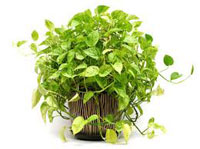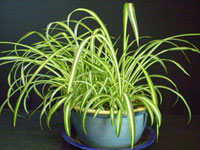MANY people think of gardening as an activity done with best results outdoors. There are, however, just as many who think that engaging in gardening indoors is equally rewarding.
 ‘Greenness’ has long been an integral part of the interior of homes, and through houseplants, one can provide a bit of nature into the home. Houseplants can also be a source of vitality by purifying the air, creating a pleasant atmosphere, and relieving stress.
‘Greenness’ has long been an integral part of the interior of homes, and through houseplants, one can provide a bit of nature into the home. Houseplants can also be a source of vitality by purifying the air, creating a pleasant atmosphere, and relieving stress.
But not all plants will be able to put up with an interior environment. It is therefore necessary to know the right type of plant for this type of gardening. Some plants which have been identified as suitable for indoor gardening, and are available locally, are the Butterfly or Areca Palm; the Scindapsus, or Devil’s Ivy; the Sansevieria, or Mother-in-Law’s Tongue; the Chlorophytum comosum, or Spider Plant; and the Gerbera Daisy.
The Areca Palm is reputedly the best plant for your living room. It is an ideal air humidifier, and removes carbon dioxide and toxins from the air.
The Scindapsus, or Devil’s Ivy, is also unique in this respect.
A study done by American scientist B.C. Wolverton found that Scindapsus is one of the top 10 plants for indoor air purification. Wolverton’s findings on the Scindapsus were published in a book titled “How to Grow Fresh Air: 50 House Plants that Purify Your Home or Office”. His study found that the Scindapsus absorbs harmful particles from the air and transports them through the stems to its roots. The veins in the leaves also break down the harmful compounds  into harmless compounds that even serve as nutrients for both the plant and the micro-organisms.
into harmless compounds that even serve as nutrients for both the plant and the micro-organisms.
Sansevieria, or Mother-in-Law’s Tongue, is said to be especially suitable for your bedroom. Although most plants need oxygen at night, the Sansevieria provides additional oxygen to the sleeper.
The Chlorophytum comosum, also known as the Spider Plant, and the Gerbera Daisy are some other popular plants which thrive indoors and also provide services that are similar to those mentioned above.




.jpg)









